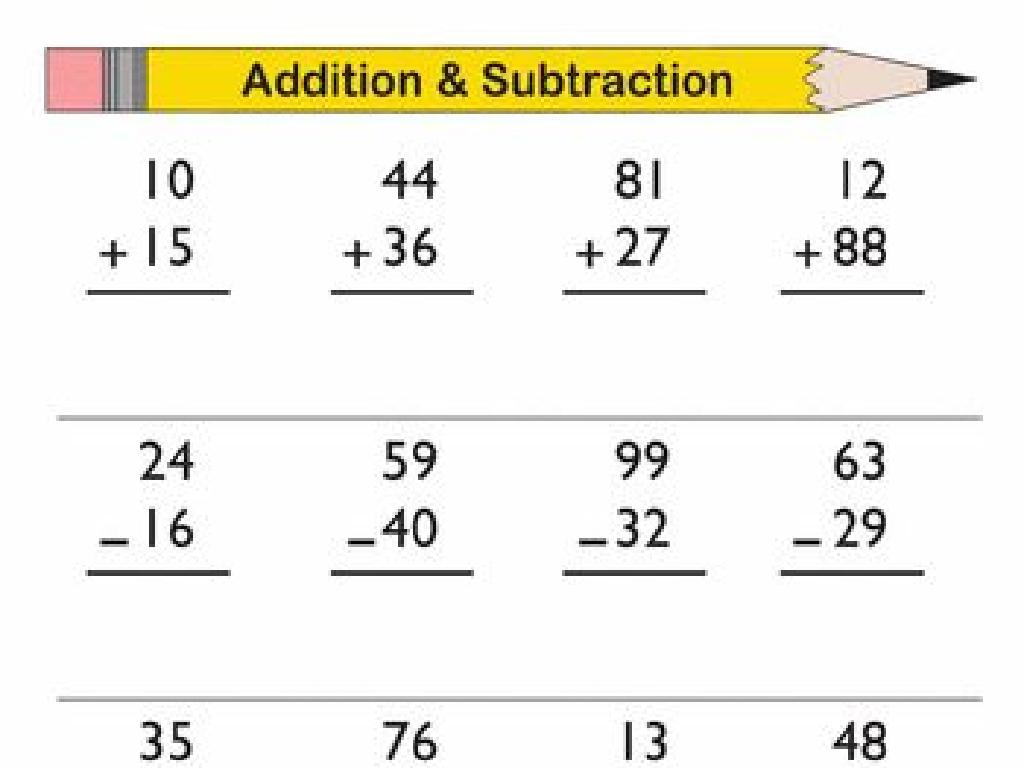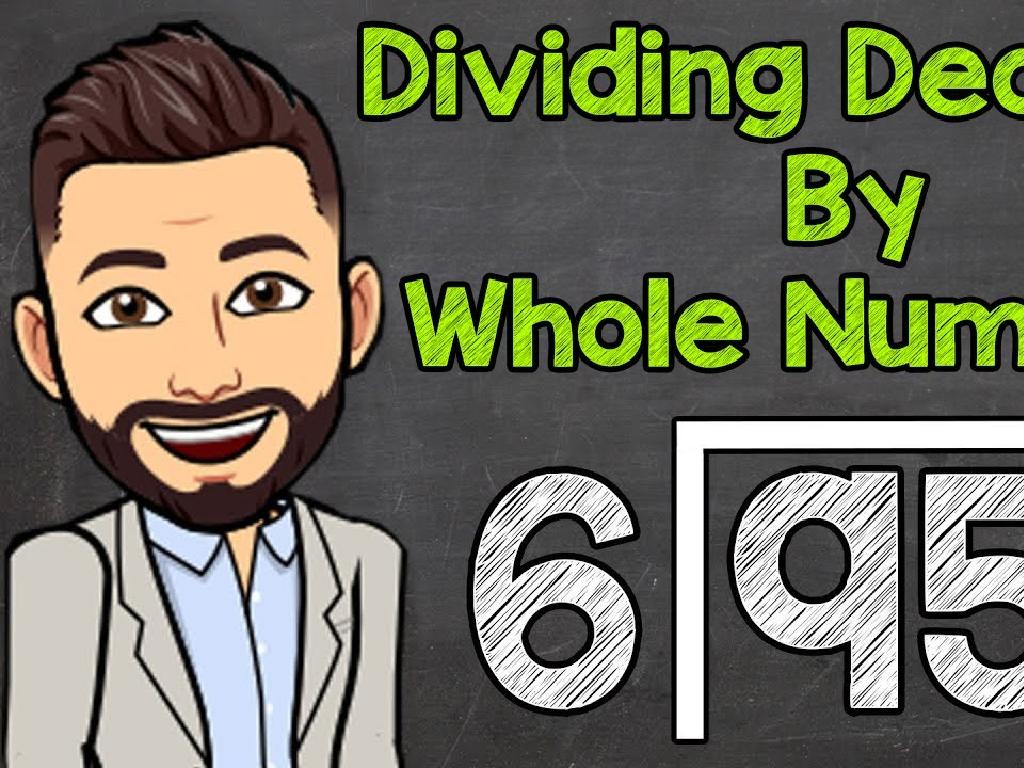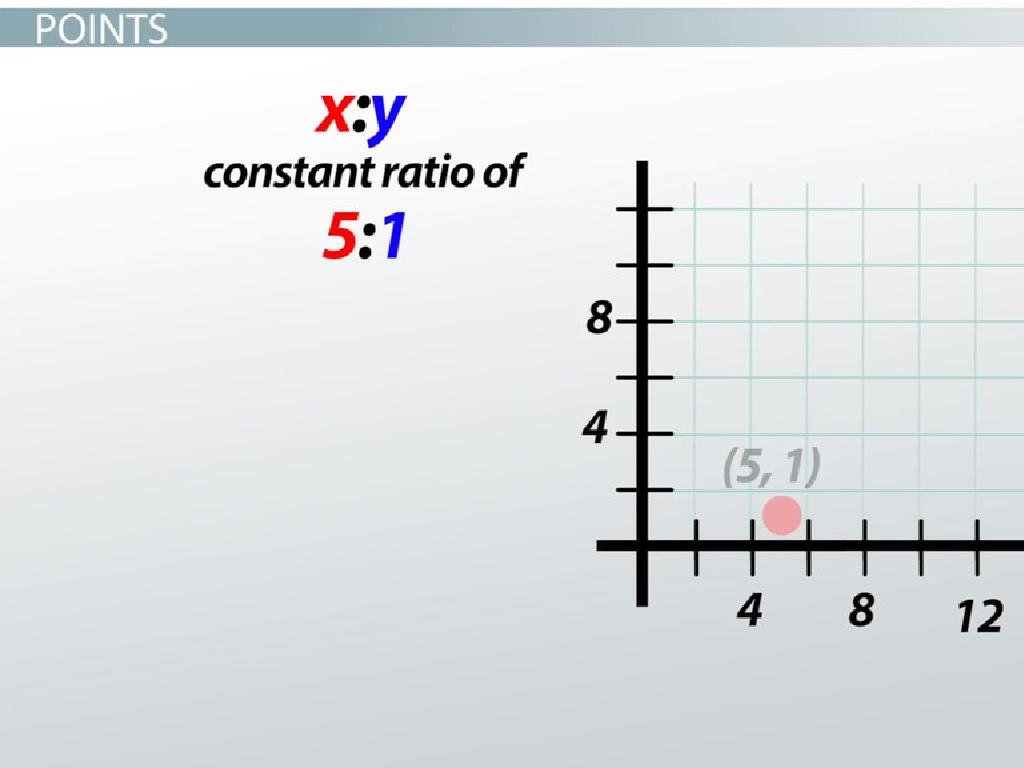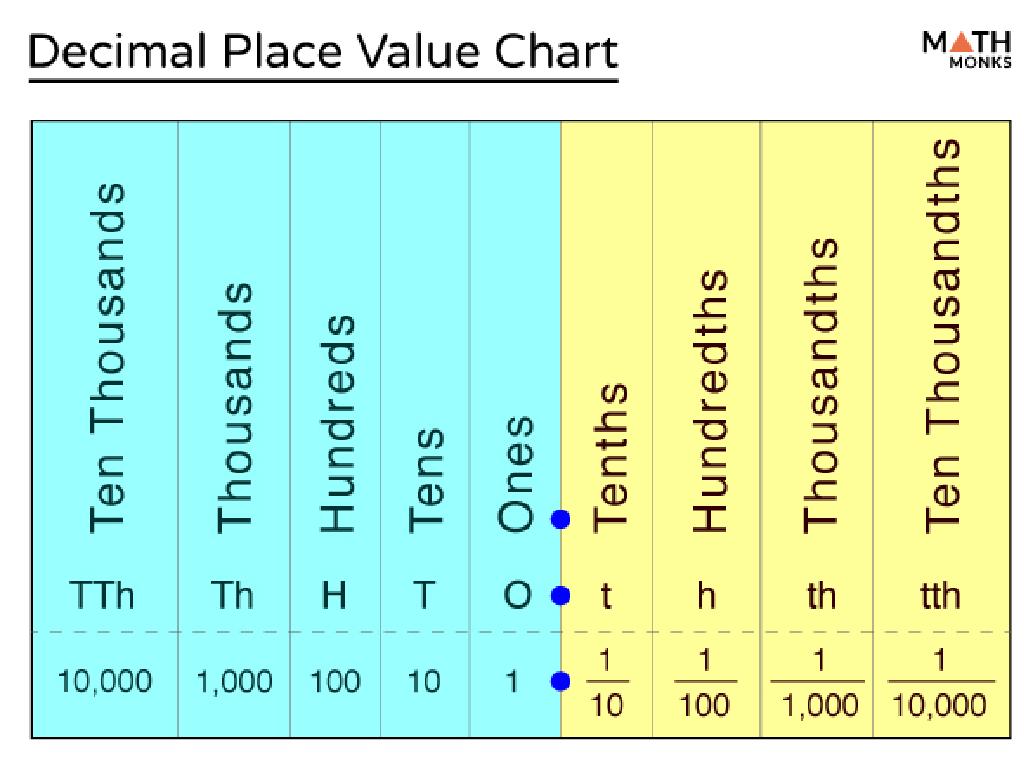Calculate Velocity, Distance, And Time Ii
Subject: Science
Grade: Eighth grade
Topic: Chemical Reactions
Please LOG IN to download the presentation. Access is available to registered users only.
View More Content
Chemical Reactions & Kinematics
– Understanding chemical reactions
A process where substances change into new substances.
– Relation: reactions & kinematics
Reaction rates can be thought of as the velocity of a chemical reaction.
– Real-life reaction examples
Rusting of iron, baking a cake, photosynthesis in plants.
– Analyzing reaction rates
Use distance-time graphs to visualize how quickly reactants turn into products.
|
This slide introduces the concept of chemical reactions and their connection to kinematic principles such as velocity, distance, and time. Begin by explaining what chemical reactions are and the signs that a reaction has occurred. Then, draw parallels between the rate of a reaction and the concept of velocity in physics. Provide real-life examples to help students visualize chemical reactions happening around them. Lastly, discuss how we can analyze reaction rates using graphs, much like how we analyze motion in kinematics, to give a clearer understanding of the speed of different reactions. Encourage students to think of other examples where they can observe the rate of a reaction in their daily lives.
Recap: Velocity, Distance, and Time in Chemical Reactions
– Define velocity in context
Velocity: speed with a direction in physical or chemical processes.
– Explore the velocity formula
Velocity = Distance ÷ Time. For a reaction, how fast a product forms or reactant is used.
– Relate distance and time to reactions
Distance represents the change in concentration, time is the duration of reaction.
– Apply concepts to chemical kinetics
Understanding these concepts is crucial for studying the rates of chemical reactions.
|
This slide aims to consolidate students’ understanding of velocity, distance, and time, and how these concepts apply to chemical reactions. Velocity, typically associated with physics, also relates to the rate at which reactants convert to products in chemistry. By using the formula ‘Velocity = Distance ÷ Time’, students can calculate the rate of a reaction by considering the ‘distance’ as the change in concentration over the ‘time’ taken for the change. Emphasize the importance of these calculations in chemical kinetics, which is the study of reaction rates. Provide examples such as the rate at which a metal corrodes or a medicine reacts in the body to illustrate these concepts in a relatable way.
Calculating Velocity in Chemical Reactions
– Understanding reaction rates
Rate at which reactants turn into products.
– Measuring reaction velocity
Use concentration change over time.
– Example: Reaction velocity calculation
Calculate using the formula: velocity = concentration/time.
– Factors affecting velocity
Temperature, concentration, surface area, and catalysts.
|
This slide introduces the concept of reaction rates and how to calculate the velocity of a chemical reaction, which is a crucial part of understanding chemical kinetics. Start by explaining that the rate of a reaction refers to how quickly reactants are converted into products. Emphasize the importance of measuring the change in concentration of reactants or products over time to determine the reaction velocity. Provide a clear example, such as the decomposition of hydrogen peroxide, where students can apply the formula for velocity. Lastly, discuss the factors that can affect the velocity of a reaction, including temperature, concentration of reactants, surface area of solid reactants, and the presence of a catalyst. Encourage students to think about how these factors might speed up or slow down a reaction.
Distance Travelled by Particles in Reactions
– ‘Distance’ in reactions explained
– Distance refers to the path particles take during a reaction.
– Visualize particle movement
– Use diagrams to show how particles move and collide.
– Activity: Estimate travel distance
– Measure how far particles travel in a given reaction setup.
– Discuss activity findings
|
This slide introduces the concept of ‘distance’ in the context of chemical reactions, specifically how it relates to the movement of particles. Begin by explaining that in chemical reactions, ‘distance’ can refer to the path that reactant particles travel before they collide and react. Use visual aids like diagrams or animations to help students visualize how particles move and interact. The activity involves students estimating the distance travelled by particles in a sample reaction, which can be done through experiments or simulations. After the activity, have a discussion to review their findings and reinforce the concept of particle movement in reactions. Provide guidance on how to measure or calculate the distance and ensure students understand the relevance of this concept to reaction rates and mechanisms.
Time Factor in Chemical Reactions
– Measuring time in experiments
– Factors influencing reaction time
– Temperature, concentration, surface area, and catalysts affect reaction time.
– Conducting a timing experiment
– Observe and record the time taken for a visible change.
– Analyzing experiment results
– Use the data to understand the relationship between reaction time and factors.
|
This slide introduces the concept of time as a crucial factor in chemical reactions. Students will learn how to measure and record the time taken for reactions to occur in experiments. Discuss the various factors that can affect the speed of chemical reactions, such as temperature, concentration, surface area, and the presence of catalysts. The class experiment will involve timing a specific reaction and noting the visible changes that occur. Students will then analyze their results to understand how different variables can speed up or slow down a reaction. This practical application helps solidify the theoretical knowledge they’ve gained about chemical reactions. For the experiment, consider reactions like the iodine clock reaction, which provides a clear visual endpoint. Ensure safety guidelines are followed throughout the experiment.
Applying Formulas: Velocity, Distance, and Time
– Step-by-step calculation guide
– Use formulas: velocity (v) = distance (d) / time (t), distance = velocity × time, and time = distance / velocity.
– Group activity with practice problems
– Students will work in groups to solve assigned problems, fostering collaboration.
– Discussion of solutions
– Groups will present their solutions, facilitating peer learning.
– Review common calculation mistakes
– Highlight frequent errors to avoid, such as mixing units or misplacing values.
|
This slide is designed to help students apply the formulas for velocity, distance, and time through a structured approach. Begin with a clear explanation of each formula and provide a step-by-step guide for calculations. Organize the class into small groups and assign practice problems that vary in difficulty. After the activity, lead a discussion where groups share their solutions and thought processes. Use this opportunity to address common mistakes made during the calculations, such as unit conversion errors or incorrect formula application. This will reinforce the correct methods and help students understand the material more deeply. Provide at least 4-5 different problems for the groups to ensure that all students are engaged and challenged according to their levels.
Class Activity: Reaction Velocity Experiment
– Objective: Observe reaction velocity
– List of materials for the experiment
– Beakers, chemicals (e.g., vinegar & baking soda), stopwatch, safety goggles
– Safety guidelines to follow
– Always wear safety goggles, handle chemicals with care, no food or drink in lab
– Step-by-step experimental procedure
– Measure reactants, mix in beaker, start stopwatch, record time for reaction completion
|
This class activity aims to help students understand the concept of reaction velocity by observing a chemical reaction. Provide a list of materials including beakers, specific chemicals like vinegar and baking soda, and a stopwatch for timing the reaction. Emphasize the importance of safety by wearing goggles and handling chemicals properly. The procedure should be clear: measure the reactants, mix them in a beaker, start the stopwatch, and record the time it takes for the reaction to complete. Possible variations of the activity could include changing the concentration of reactants or the temperature to observe the effects on reaction velocity. Ensure students make careful observations and record their data accurately for discussion in the next class.
Conclusion: Velocity, Distance, Time in Reactions
– Recap of velocity, distance, time
– Reviewed formulas and units for calculating each.
– Significance in chemical reactions
– Understanding these concepts helps predict reaction rates.
– Open floor for questions
– Encourage curiosity and participation
– Asking questions deepens comprehension.
|
This slide aims to summarize the lesson on how velocity, distance, and time relate to chemical reactions. Emphasize the importance of these concepts in predicting how quickly reactions occur, which is crucial in scientific experiments and industrial processes. Encourage students to ask any lingering questions they may have, fostering an environment of curiosity and active participation. This is also an opportunity to assess student understanding and clarify any misconceptions. Provide examples of how these calculations are used in real-world scenarios, such as determining how fast a reactant is consumed in a chemical process.





